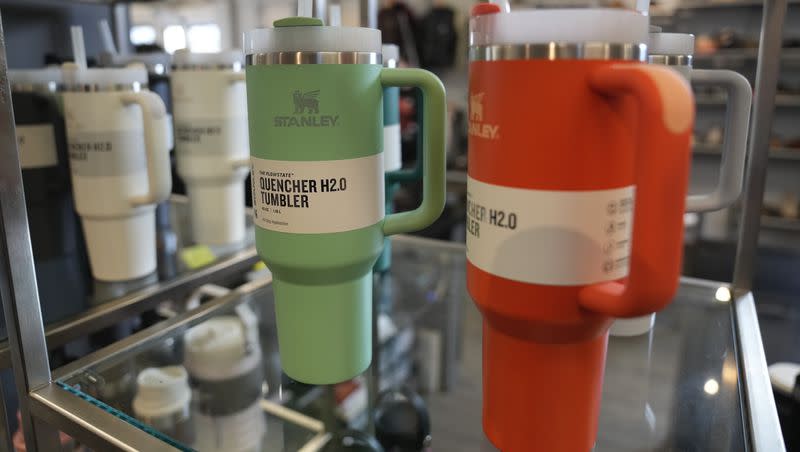Do Stanley cups have lead? What experts have to say

Some social media users have been conducting at-home lead tests on the popular Stanley tumblers. A few claim they have found the cups to contain lead, while other tests have been negative, per USA Today.
But what do experts have to say about this, and is there an actual risk to Stanley and other brands of tumblers?
Related
What’s the lead used for?
Stanley cups and similar travel tumblers do, in fact, have lead sealed in the base.
According to CNN, lead is actually used as part of the tumbler’s vacuum insulation. The manufacturing process uses an industrial pellet to seal the insulation to the base, which does include lead.
So to prevent lead poisoning, the tumblers are covered by a layer of stainless steel to protect consumers.
The pellet, therefore, is sealed and inaccessible to liquids unless the steel barrier breaks off, which can be possible, but is “rare,” according to a Stanley spokesperson who spoke to NBC News.
A separate statement was shared to CNN. “Rest assured that no lead is present on the surface of any Stanley product that comes into contact with the consumer nor the contents of the product.”
The spokesperson who talked to NBC News expressed that the company is making an initiative to use alternative materials in the sealing process.
Is the contained amount of lead safe?
The New York Times featured Jack Caravanos, a professor of public health at New York University who conducted tests on three different Stanley cups using an X-ray fluorescence detector.
Caravanos revealed his device did not find lead “in any part of the cup.” He added that since the lead is sealed tightly, the lead is “very unlikely to ever be released from the cup and be made available for ingestion.”
He also advises to refrain from using at-home lead tests currently on the market, as none are considered reliable or approved by the Environmental Protection Agency.
Can I get lead poisoning from my Stanley cup?
Ronnie Levin, a veteran scientist of EPA and instructor at Harvard T. H. Chan School of Public Health, told Today that if the stainless steel is intact and stays in place, then it’s OK to drink from.
However, it’s recommended by experts to be particularly careful if the barrier is not intact, especially if there can be a repeated exposure to lead.
“Though lead poisoning is unlikely to happen from a single instance, if a child puts the bottom of one of these cups against their mouth or rubs the surface with their fingers and then puts them in their mouth, contamination can occur,” Levin said.
Jenna Forsyth, a Ph.D. research scientist at Stanford University School of Medicine, added to Today that one instance of exposure may not do damage, but recurrent scenarios, such as scraping a tumbler across a hard surface, may result in tiny lead pieces flaking off.
Stanley is not the only tumbler company to have used lead in its product. CNN reported multiple cases of when similar products were recalled for excessive, potentially accessible amounts of lead.
Related

